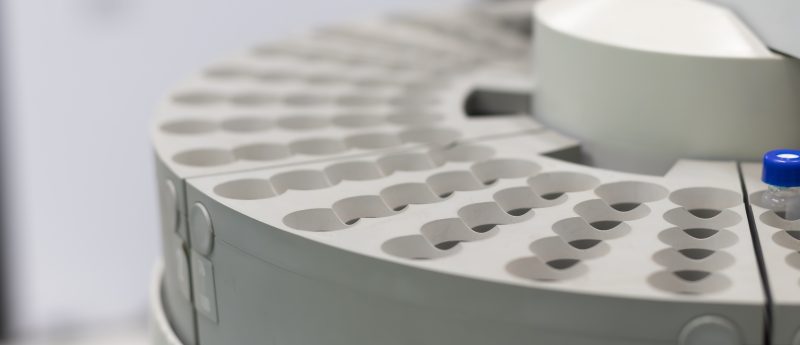Interview with Joe Fox (SCIEX) on the BioBA solution and the shift in the pharmaceutical industry from small molecule therapeutics to large molecule biologics

 Could you tell us a little about your career to date and how you ended up in your current role?
Could you tell us a little about your career to date and how you ended up in your current role?
My background is in the sciences, I have studied with biologists, biochemists and mass spectrometrists from an early age, gaining a real understanding of MS as a tool rather than an end unto itself.
I joined SCIEX about 5 years ago and first matriculated as the Director of the Global Key Accounts Team. It was a fantastic opportunity for me to really engage with a broad variety of pharmaceutical customers, understand the challenges they faced from different therapies, and discover some of the consolidation they faced at that time due to the evolving nature of the pharmaceutical pipeline from traditional small molecule therapeutics to large molecules.
I then moved over to my current role, which is Senior Director of the Pharmaceutical Business Unit. This involves managing the overall strategy and operational profitability of SCIEX’s engagement with pharmaceutical and CRO customers. It is a great opportunity for me to help manage our product support and application strategy, and to some extent to support the drive to find new therapies to improve human health.
Can you describe the BioBA solution?
The BioBA solution is an evolution of SCIEX’s approach to the market, which is to offer solution based product selections rather than single instrument products, although we will certainly continue to drive innovation in all aspects of our product portfolio.
When we think about the evolving nature of the pharmaceutical pipeline, it includes an increasing percentage of large molecule based therapeutics. These range from ‘simple things’ such as therapeutic peptides and monoclonal antibodies, to an ever increasing complexity of things such as ADCs, fusion proteins and pegylated peptides.
This has presented new challenges to our bioanalytical community – particularly those who leverage LC-MS as a technology. The challenges mainly exist across three things: standardized sample preparation; robust and reliable LC-MS technology that can handle this evolving class of therapies; and finally easy to use software and reporting.
The BioBA solution is meant to address each one of these challenges in turn with standardized sample preparation kits. This will make it easier for LC-MS bioanalytical scientists who may not have expertise in large molecules or biologics to take something off the shelf and apply it to their therapies. The BioBA also includes an automation component to increase the consistency and improve the overall efficiency of sample preparation. Robots are great at doing the same thing many times in the exact same way, which eliminates the human error aspect of manual sample preparation. This of course also drives the efficiency, as humans don’t need to actually do all the sample preparation, allowing them to do other value added activities.
Robustness and reliability for large molecules is a problem as the analytes come in complex matrices, present new challenges in separation and selectivity, and the analytes themselves can cause contamination of the instrument if not handled correctly. The combination of the ExionLC™ system and QTRAP® 6500 LC-MS system first and foremost provides robustness and reliability and also has other modes of selectivity to give the community opportunities to effectively separate out, identify and reach the high sensitivity LLOQ required for these large molecules.
Finally in terms of reporting, we are really looking to drive simplicity and standardization in this market. We have coupled this with our MultiQuant™ software that minimizes the necessity for user interaction. It automates the whole standard set of process to give the right answer consistently and in a compliant manner.
We have therefore addressed the sample preparation component, the automation for consistency, the robustness, reliability and sensitivity that’s required for the molecules themselves, as well as a reporting structure at the other end.
We have also included a variety of methods, in a sense ‘canned methods’, as we heard there is a need from the broader community – particularly from an evolving set of CROs. These methods are directed towards common compounds we see in large molecule analysis for insulin and glucagon, for example. They include standardized procedures from the kits all the way through to reporting, but also the method parameters for optimizing the compounds themselves. Again, this is about simplicity, standardization and efficiency. This means companies working on these particular compounds or compound classes can get up to speed in up to around a day or two if they are working on the same molecule the method is for. If they are working on something analogous, it certainly gives them a running start towards achieving that right answer faster.
What are the potential applications for the BioBA solution?
We have talked a little about the evolution of the pharmaceutical/biopharmaceutical therapeutic portfolio from 10% large molecule therapies, a little over a decade ago, to now nearly 50% of the entire pipeline.
The primary application is to support the bioanalytical community itself, particularly the LC-MS bioanalytical community in quantitating these new biotherapeutics. The BioBA solution provides support for our traditional small molecule experts who are increasingly supporting studies involving biotherapeutics. The data provided via LC-MS is quite often complimentary to the more traditional mode of bioanalysis of these compounds, which is LBA, so we also want to support our bioanalytical community in providing orthogonal information that can once again improve the efficiency, standardization and speed up the development of these critical therapies as they move through the portfolio.
In terms of customer subsets, broadly it will be the LC-MS bioanalytical community – particularly those transitioning from small molecule to large molecule bioanalysis. We also think that this solution will find a particular home in the very fast growing and critical segment of CROs who are focused on efficiency, and are increasingly relied upon by large pharma and biopharma to conduct bioanalytical assays.
What would you say the advantages are, and who would benefit from this package?
An advantage of this solution is that it provides a holistic approach to the very challenging problem of biologics bioanalysis. Customers with an evolving set of expertise in large molecule bioanalysis can purchase this solution from SCIEX, be trained on the approach from sample preparation all the way through to reporting, and speed up a learning process that may otherwise take weeks or months in a standard setting.
From an analytical perspective the standardization and consistency that we introduce along with the sample preparation automation reduces the variation and potential for repeated analyses, and thus improves the overall efficiency. The robustness, reliability and improved sensitivity and selectivity of the ExionLC™ system and QTRAP® 6500 LC-MS system combination in the core of the solution improves users’ overall efficiency. Finally the software/reporting integration makes for minimal user intervention.
When we look at this holistically, we feel the solution improves the overall robustness and reliability of the large molecule bioanalytical workflow, whilst still improving our customers’ ability to meet those extremely challenging LLOQ. We also believe the solution provides an opportunity to improve the efficiency of the scientists in the laboratory itself, as they can focus on the increasing volume of work and the need to move between highly added value activities.
There has been a shift from the small molecule therapeutics to larger molecule biologics; do you think this shift will continue?
I do, I think there are a variety of reasons behind this. One of the main factors is the set of expertise that has developed in the molecular biology and biochemistry area. In the entire context of this cross -omics environment, we are gaining a much better understanding of systems biology and as a result not only the targets but the therapeutics we can develop to impact them.
Having said that, we are seeing compound classes that are a combination of both – ADCs are a great example. ADCs possess both the small molecule component, which is the pay load, as well as a large molecule component that makes them highly selective and directed toward their target. To properly analyze those compounds, expertise in both areas is required. I believe ADCs are possibly the first and best marriage between the necessity of small molecule and large molecule bioanalysis, but by no means will it be the last.
In addition, as we increase the complexity of these biotherapeutics, LC-MS is required to provide complimentary information. Our largest pool of expertise in that area still lies within the small molecule bioanalytical community. I therefore envisage our more traditional LBA bioanalytical scientist as well as our traditional small molecule bioanalytical scientist converging and helping each other, thereby the community, to drive these therapies forward.
In your opinion due to the shift from small molecule therapeutics to large molecule biologics, do you believe there is an increased need for collaboration between those working in both areas?
Clearly there is – I think the community is now doing a very good job of this, in some ways out of necessity. The expertise in sample preparation that is required for biotherapeutics bioanalysis via LC-MS is largely held within the LBA community, and in my experience they have been great in terms of collaborating with LC-MS scientists, to coach them and develop new and exciting approaches to improve analyses.
The small molecule LC-MS scientists have in turn interacted with our LBA scientists and been able to provide guidance and again complimentary information for less traditional analyses of biotherapeutics that require an orthogonal approach.
I expect this to continue due to the evolution of the therapeutic portfolio and the converging goals of those two groups. I want to emphasize that I view LC-MS and LBA as complimentary to each other rather than any type of replacement.




